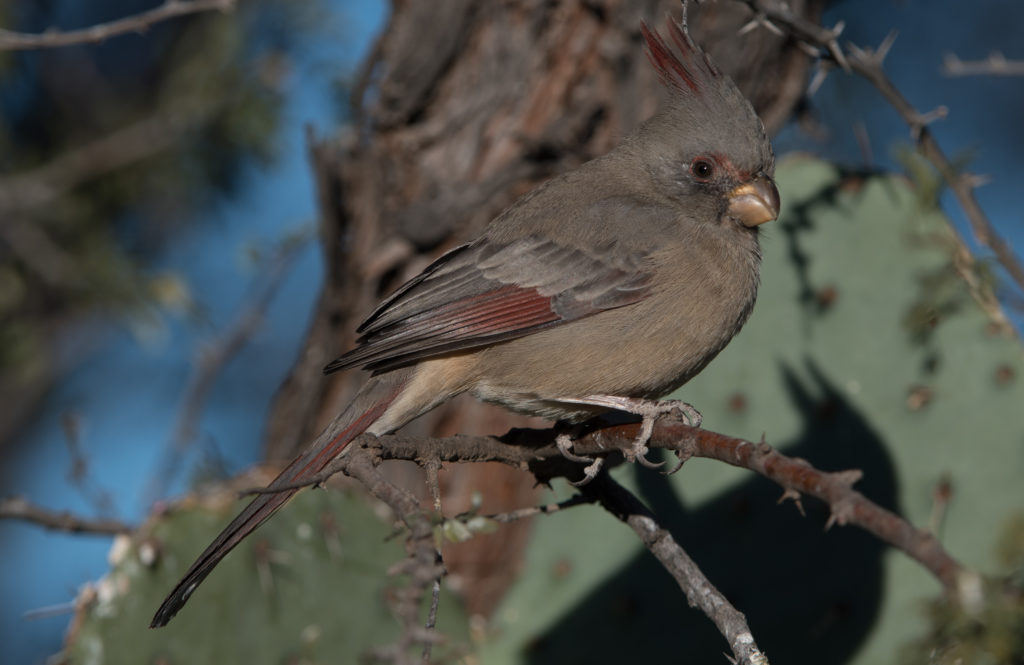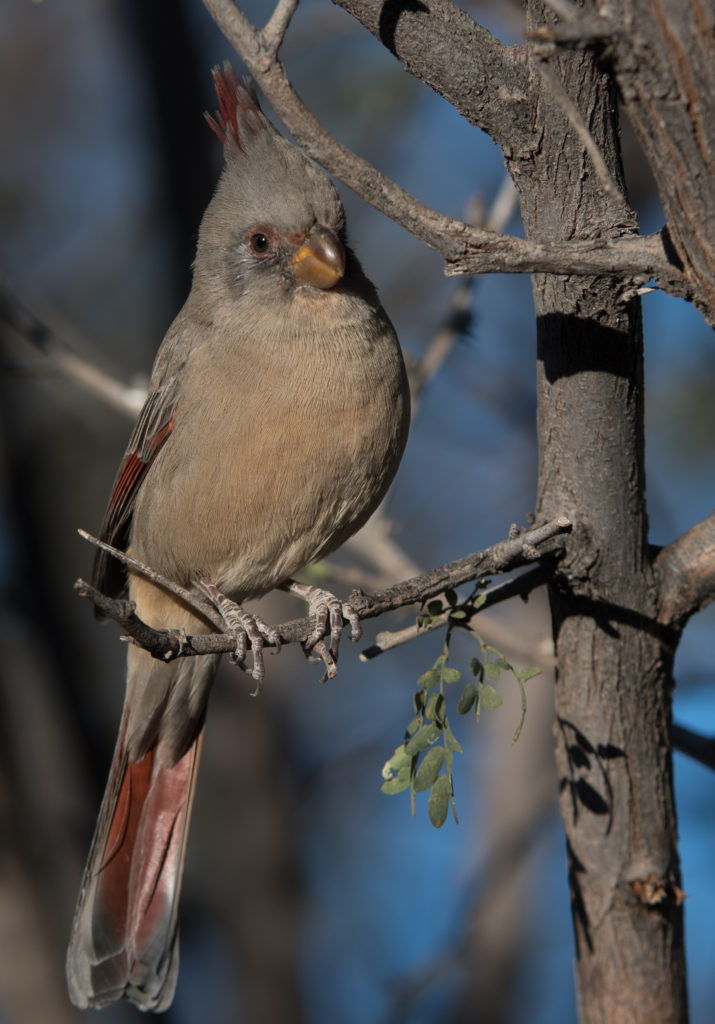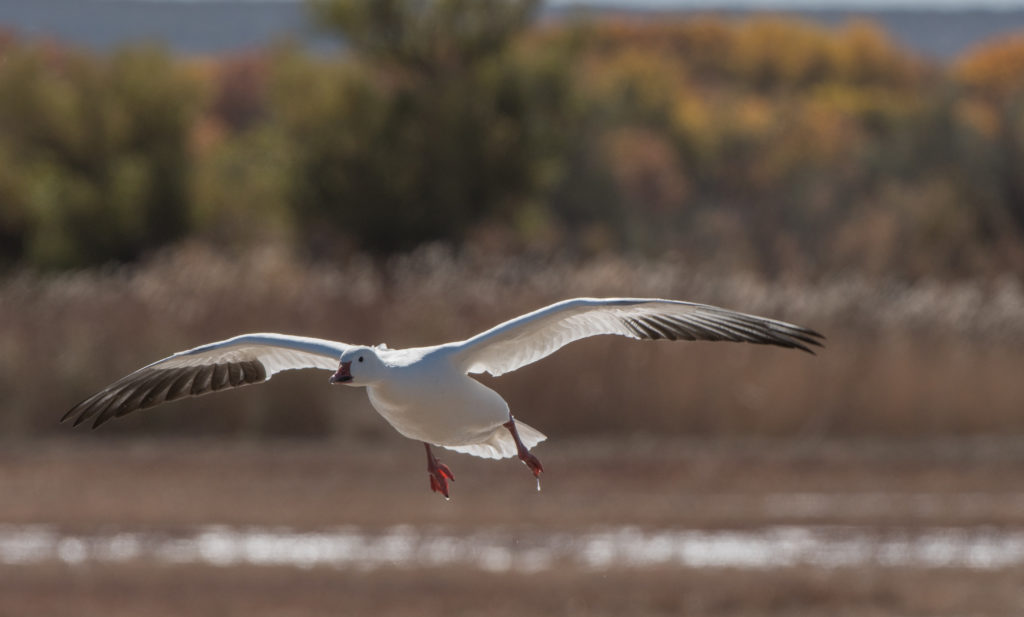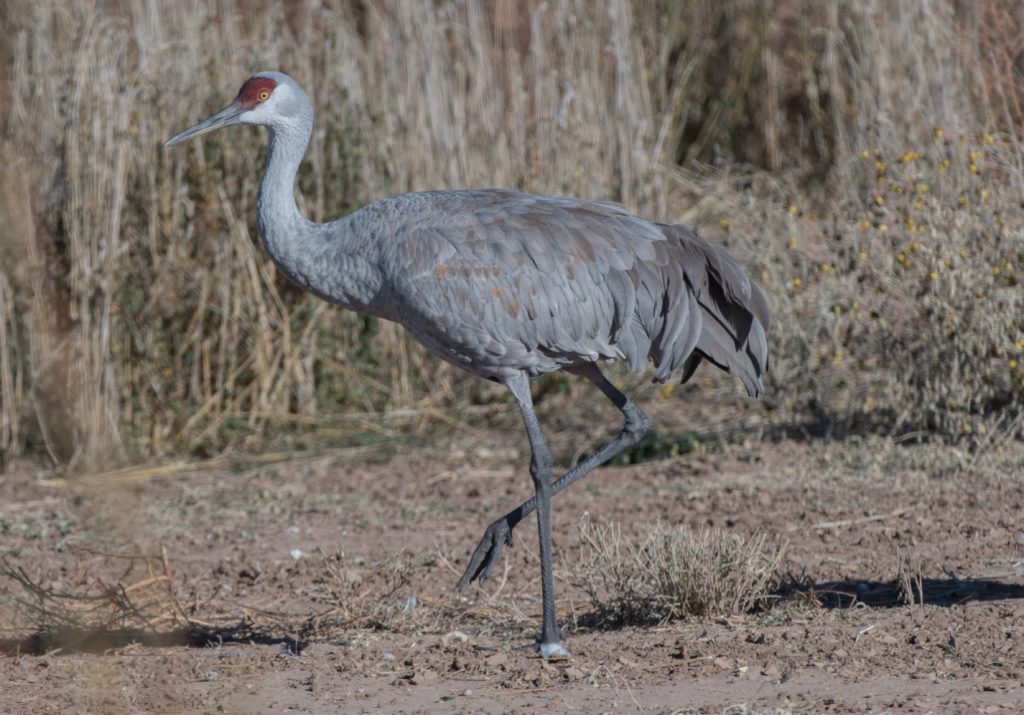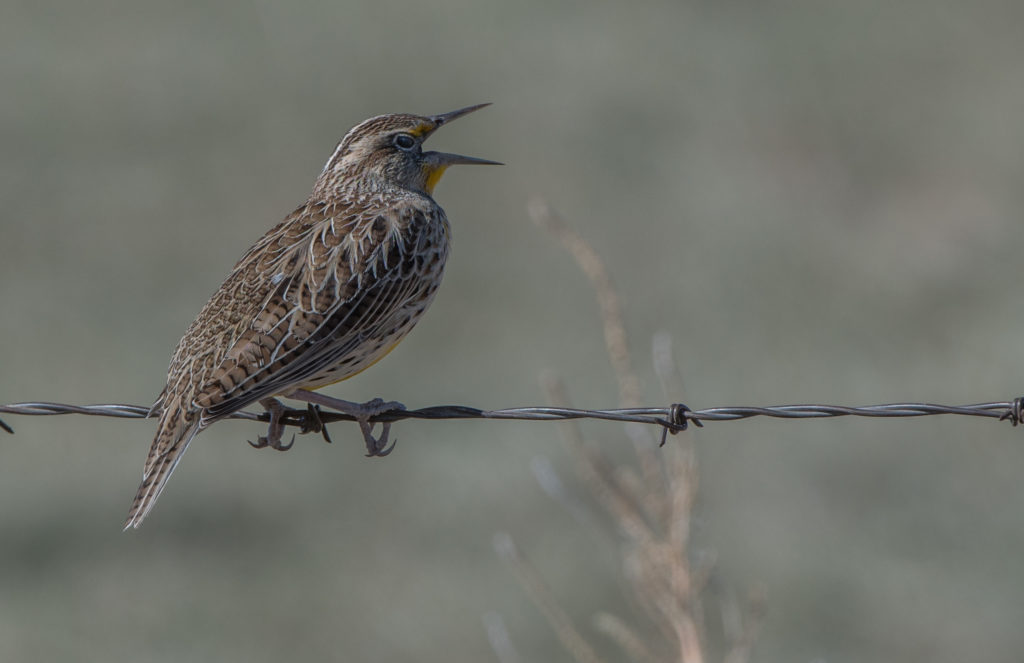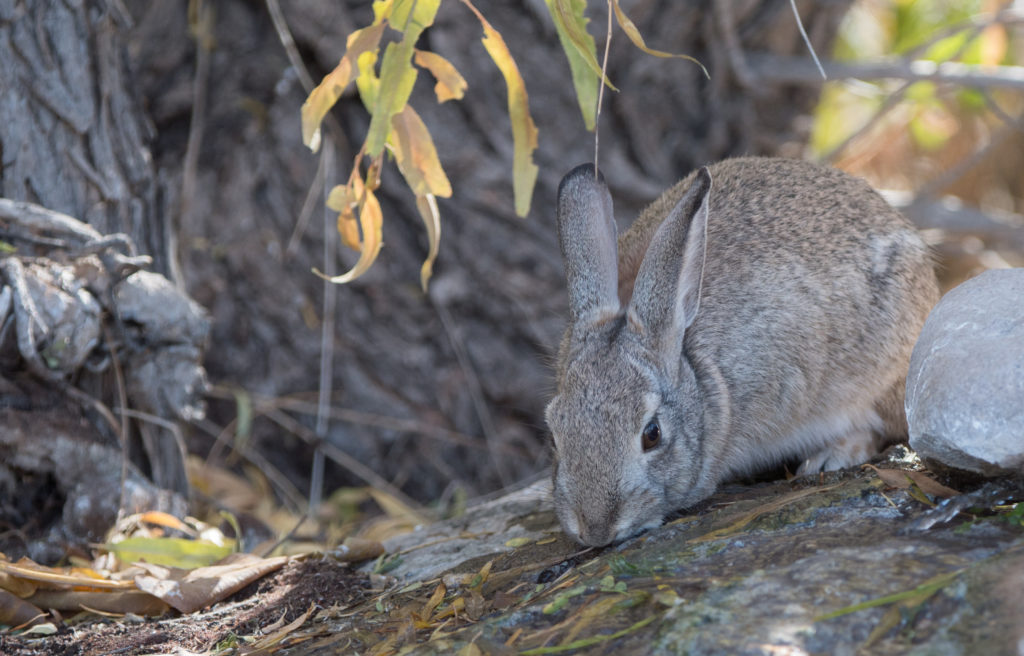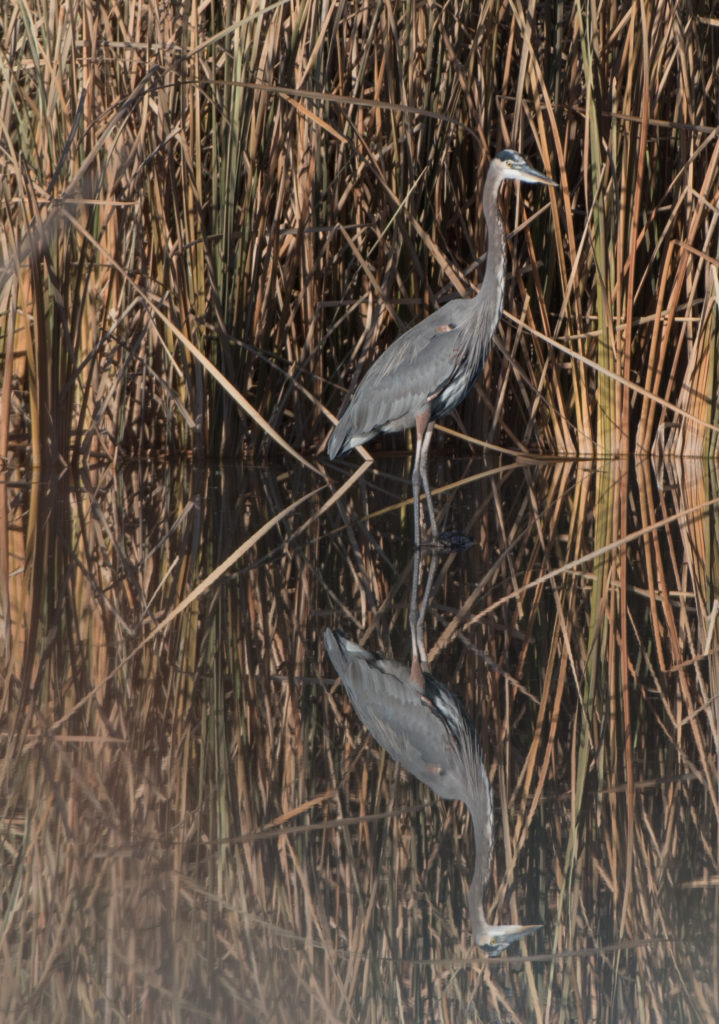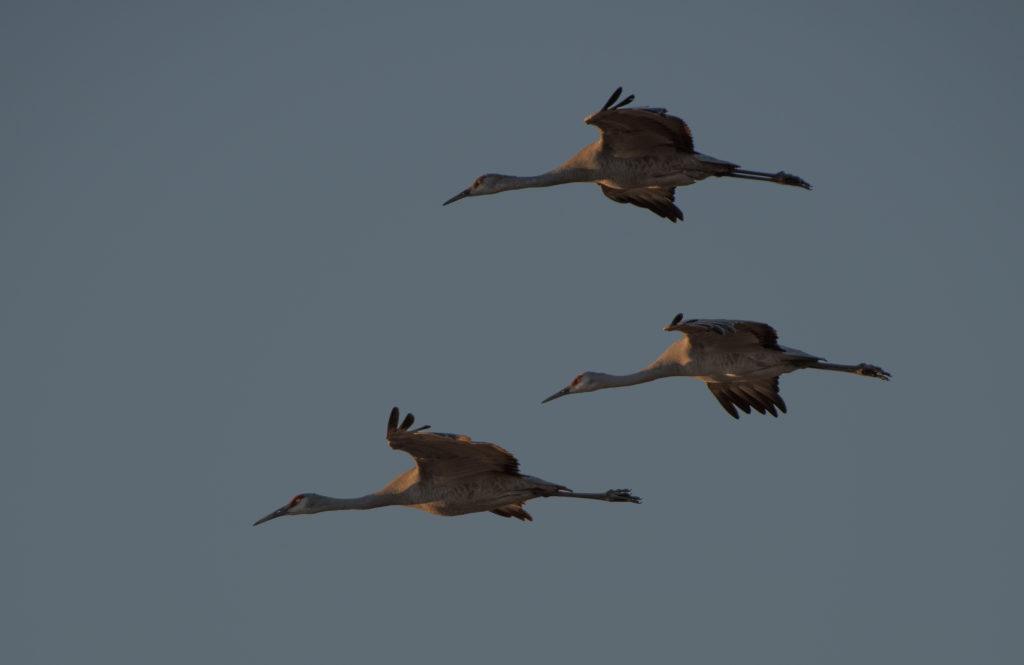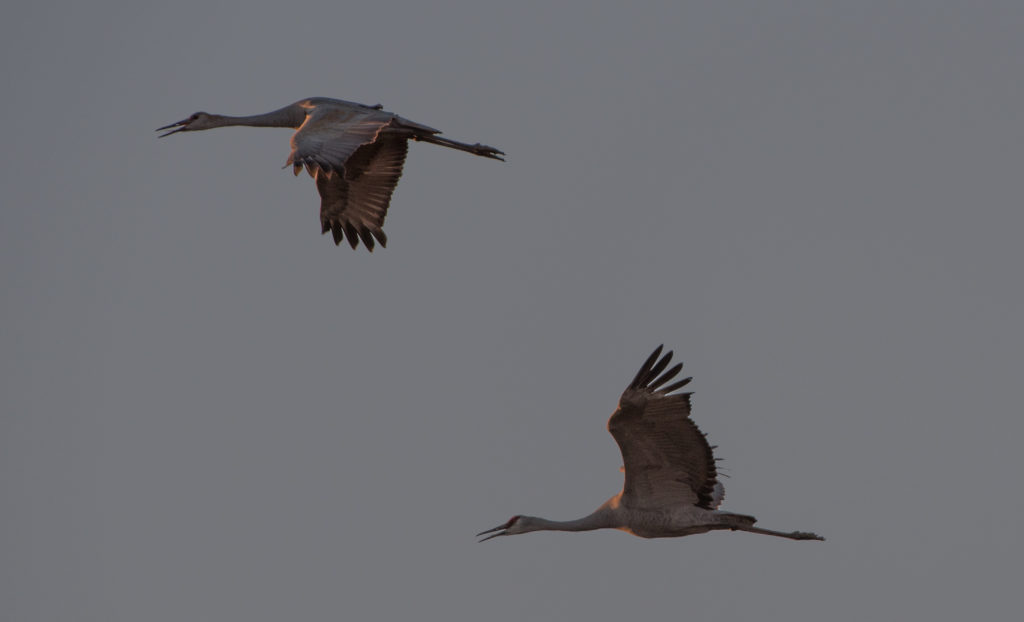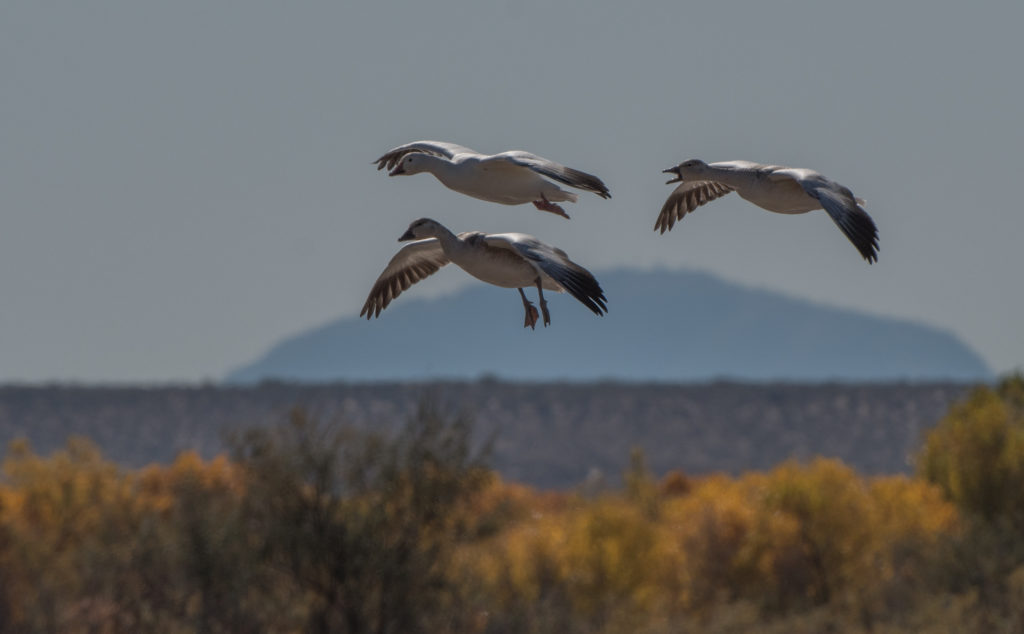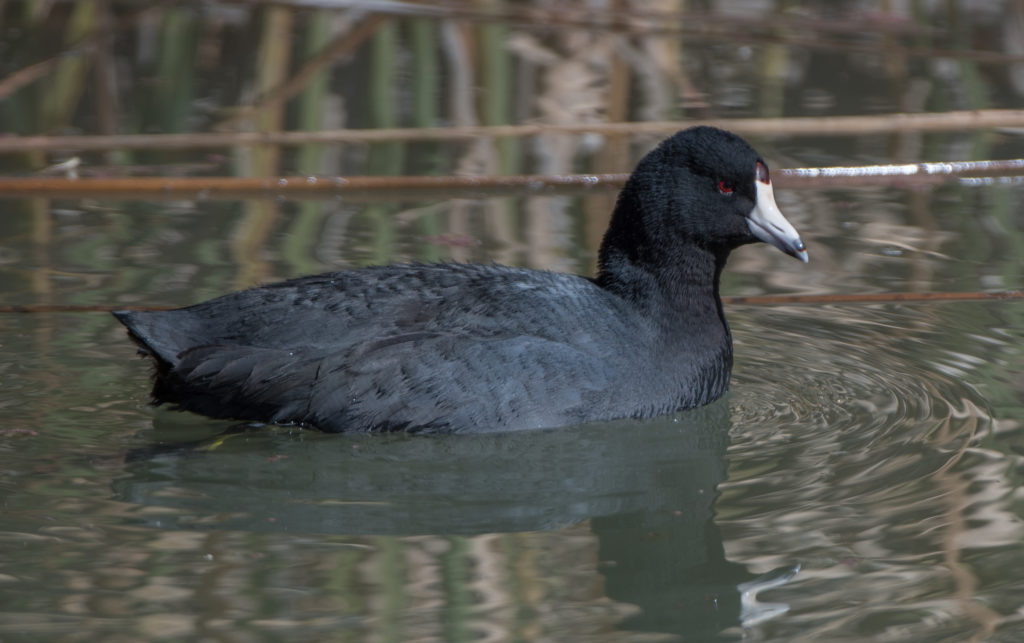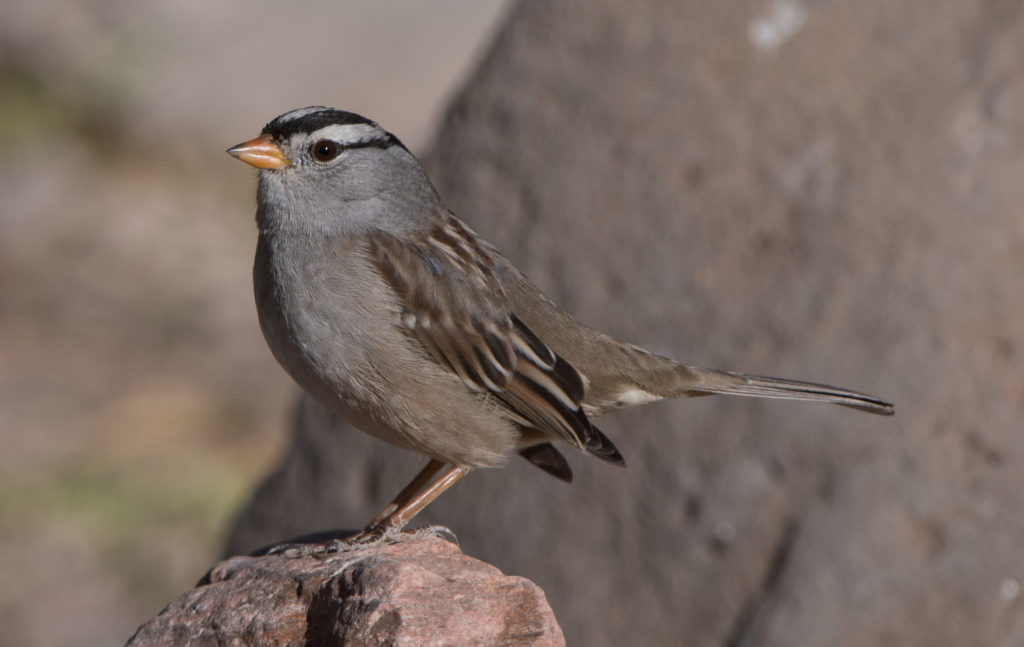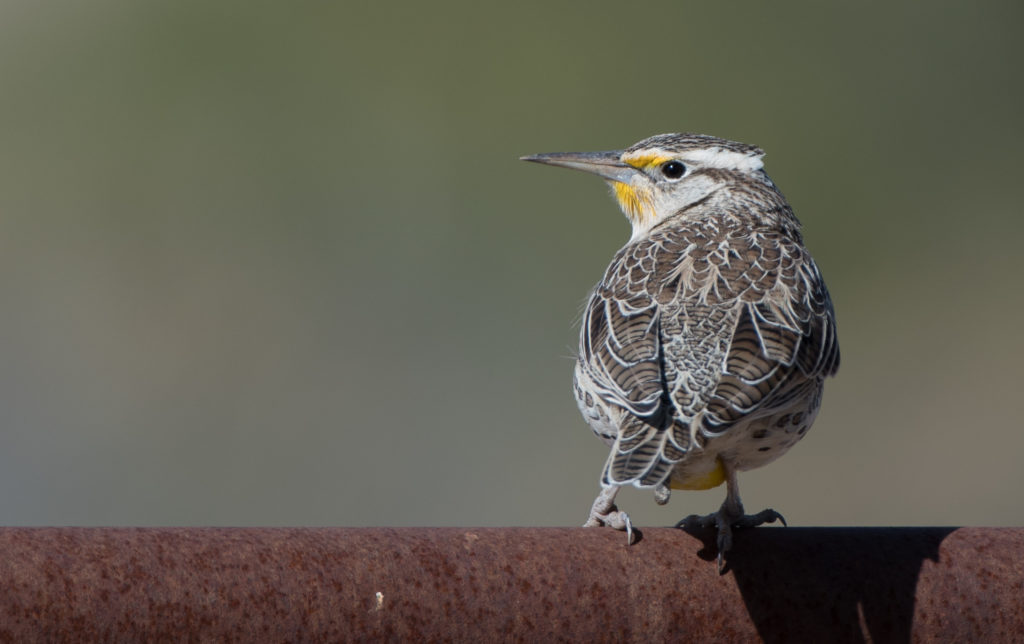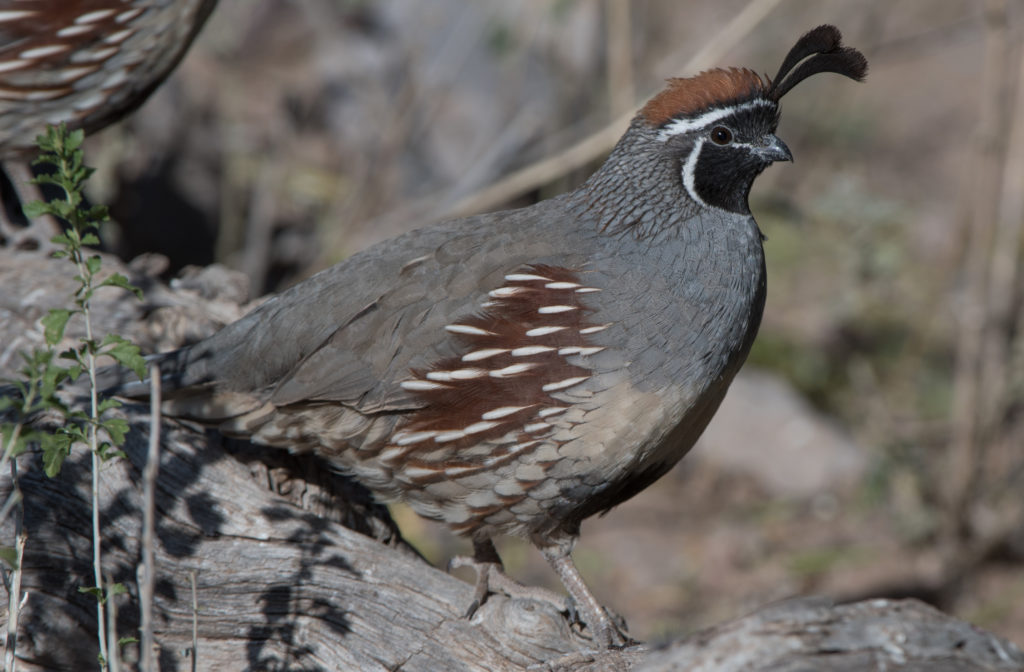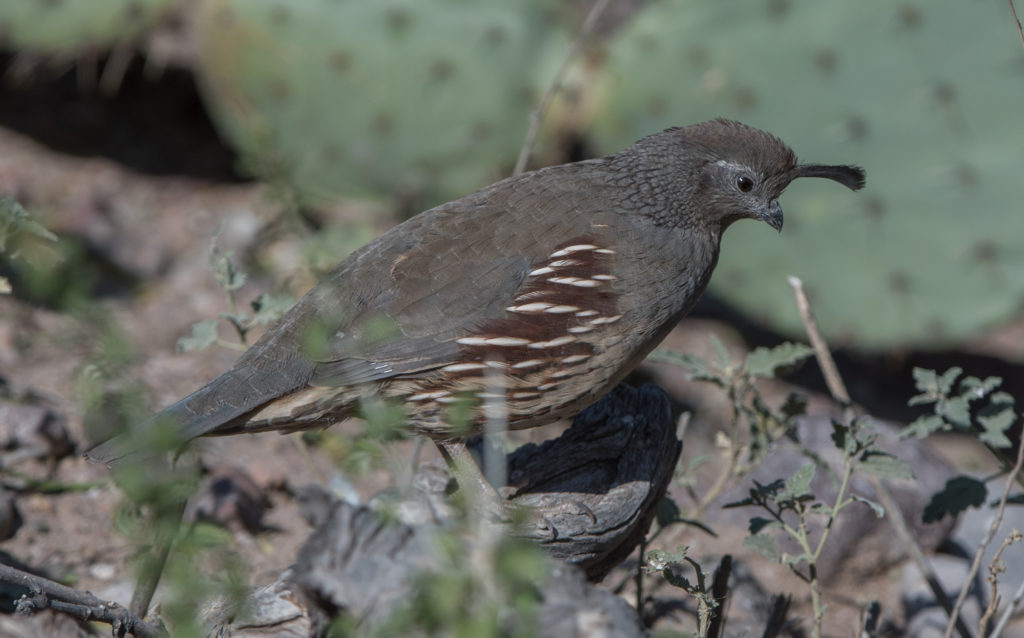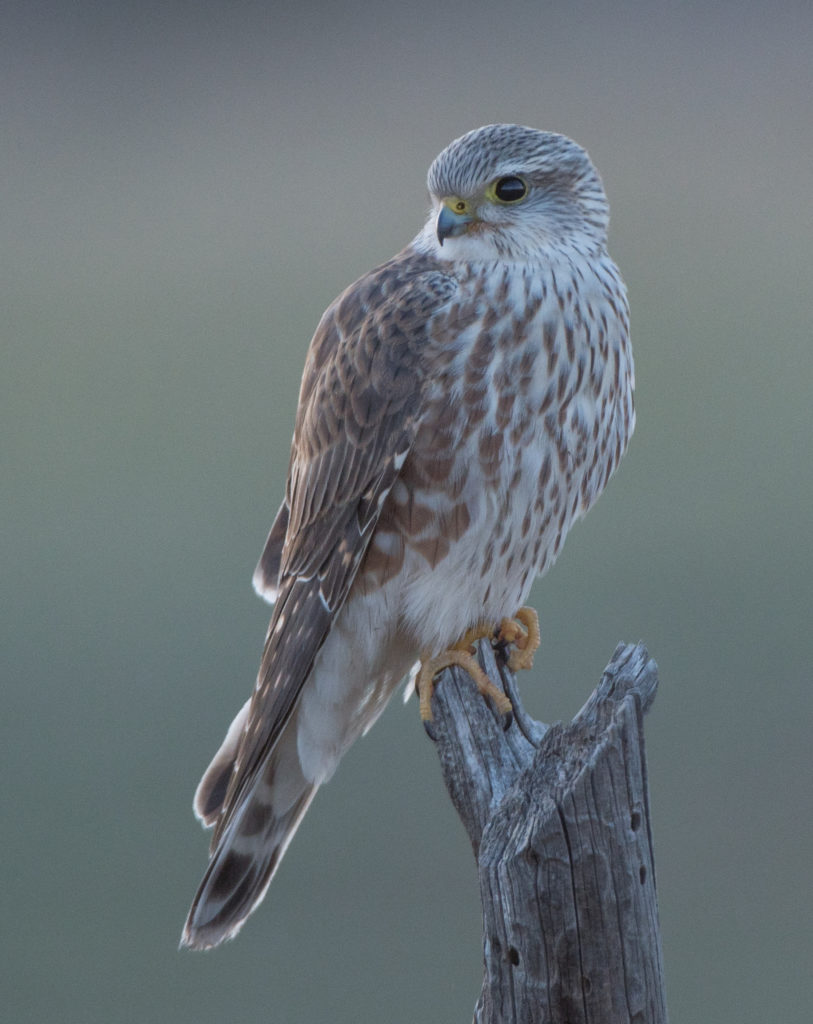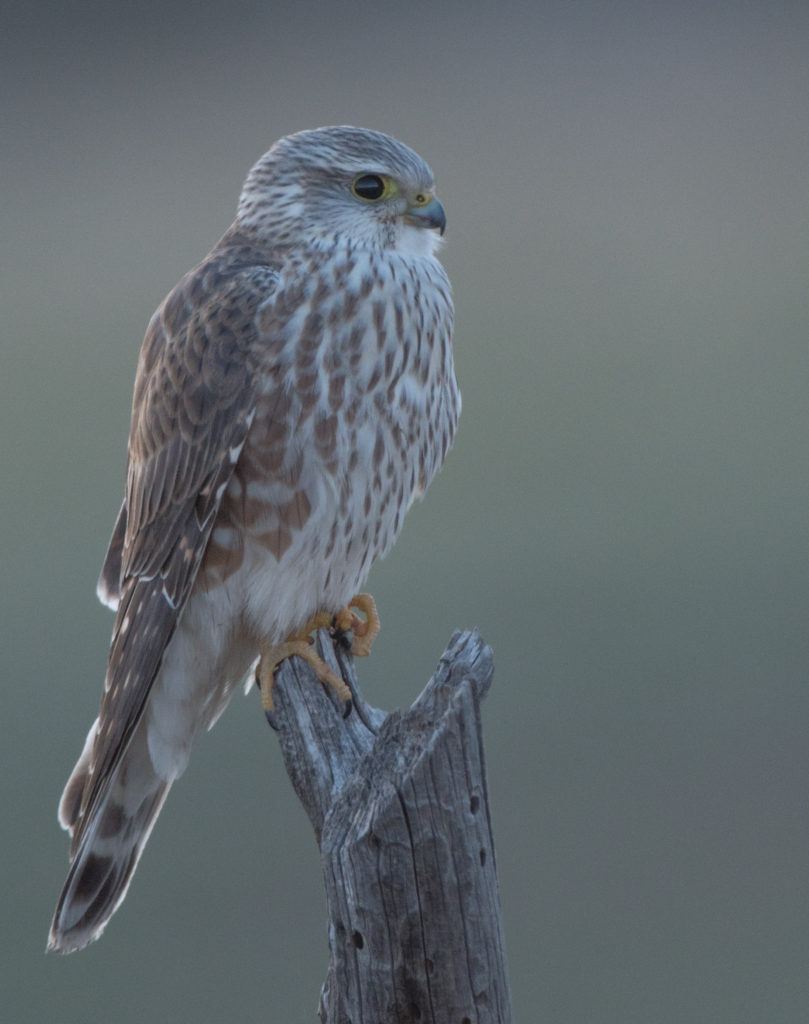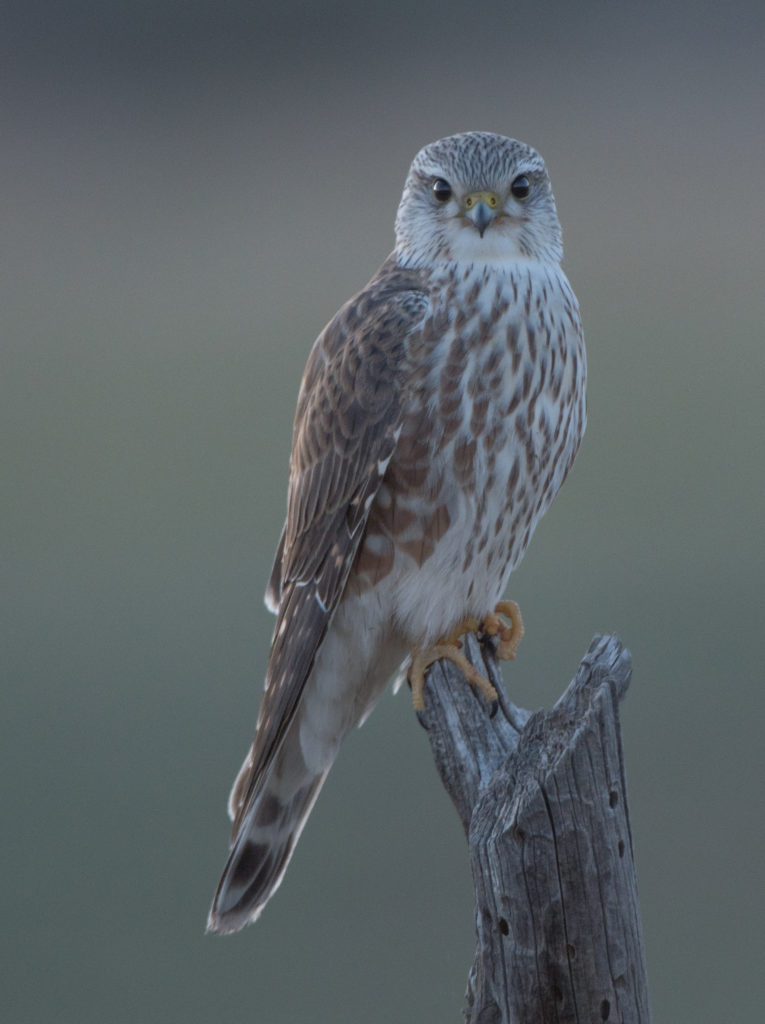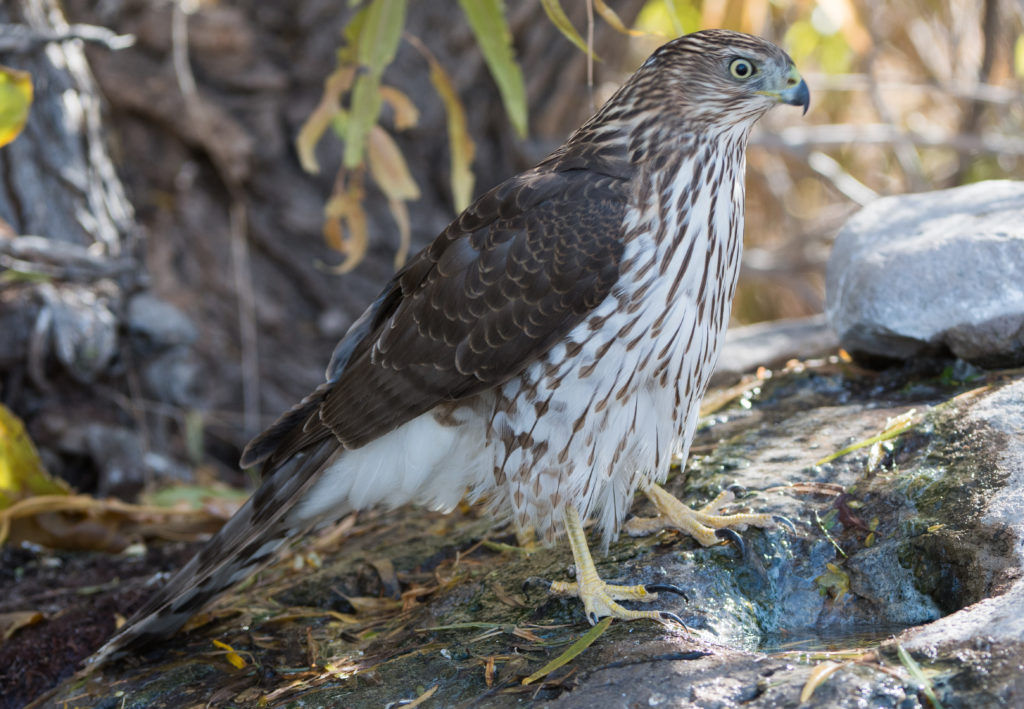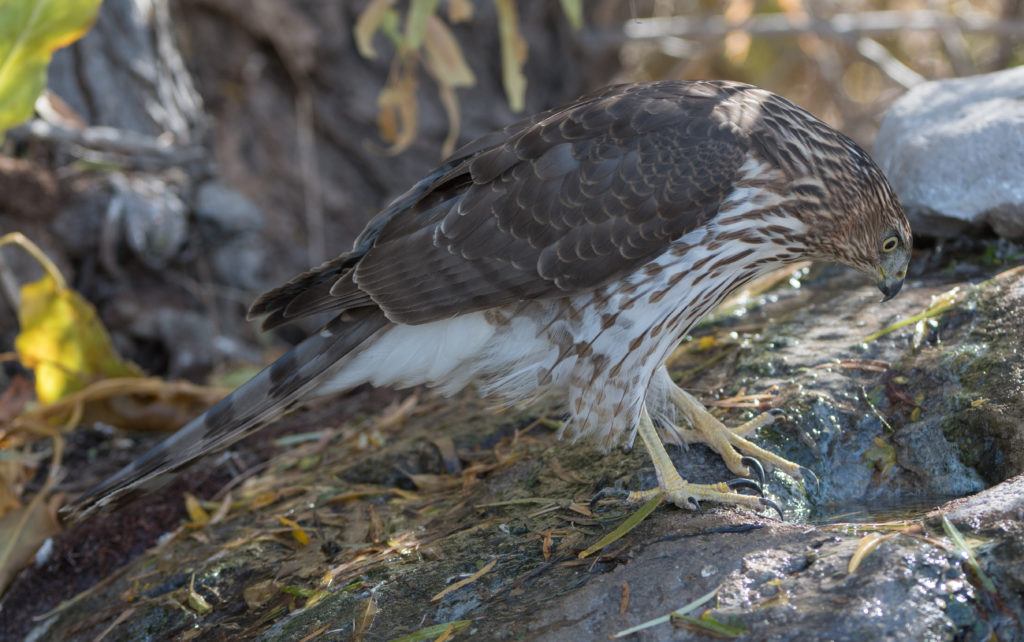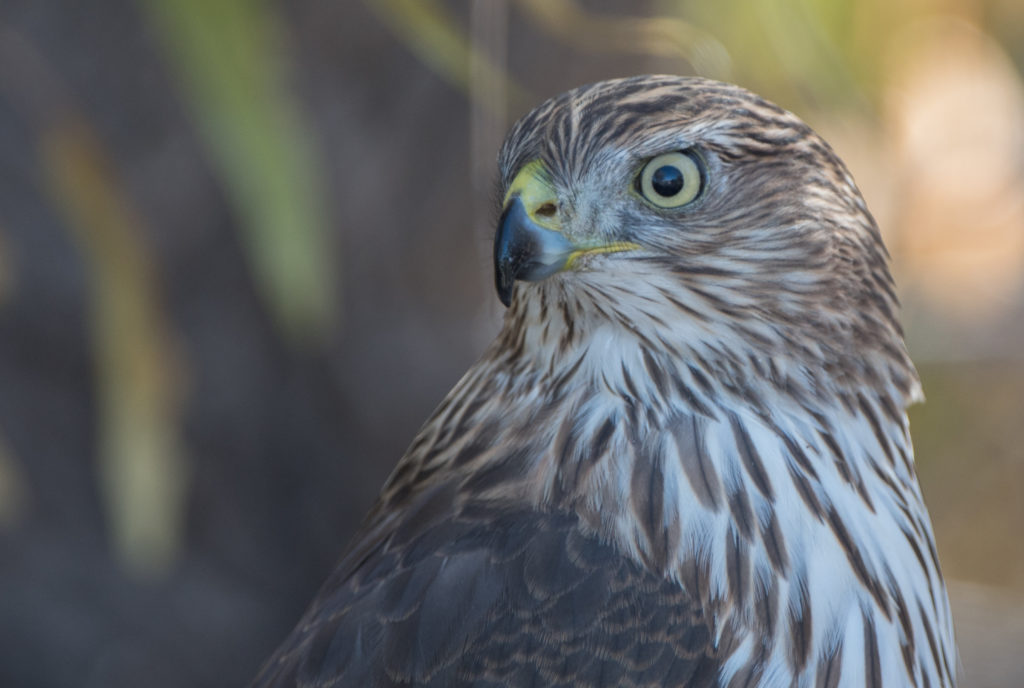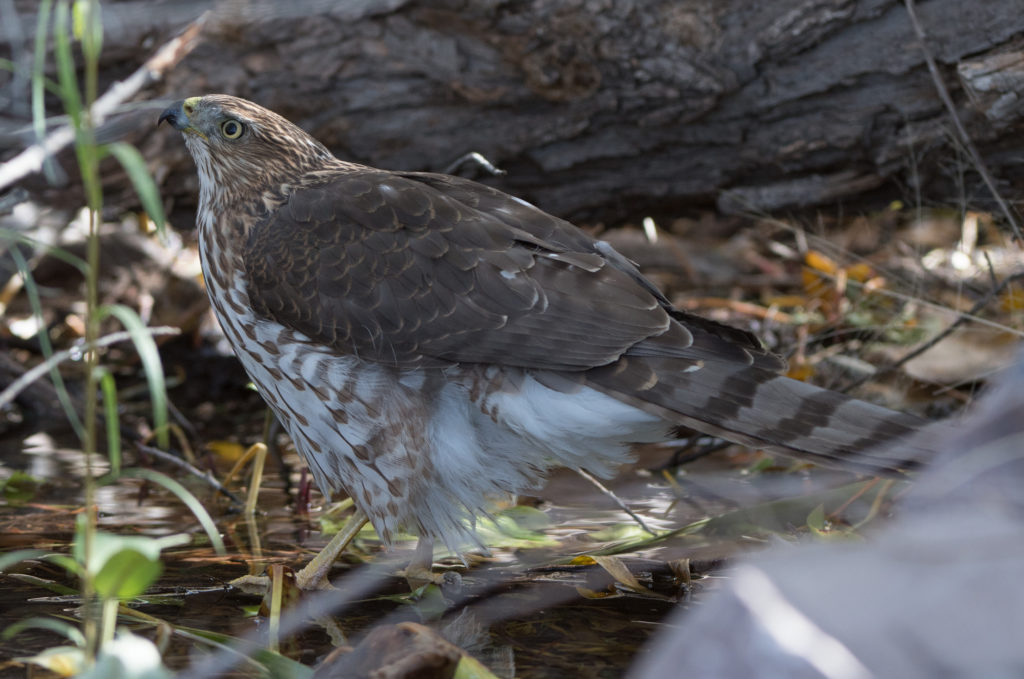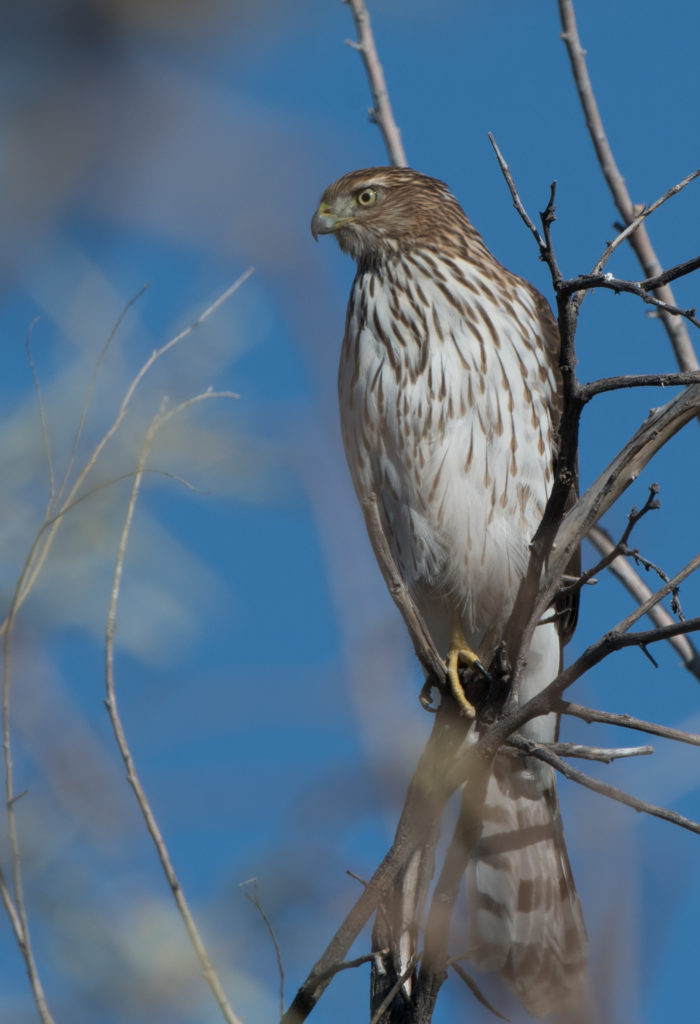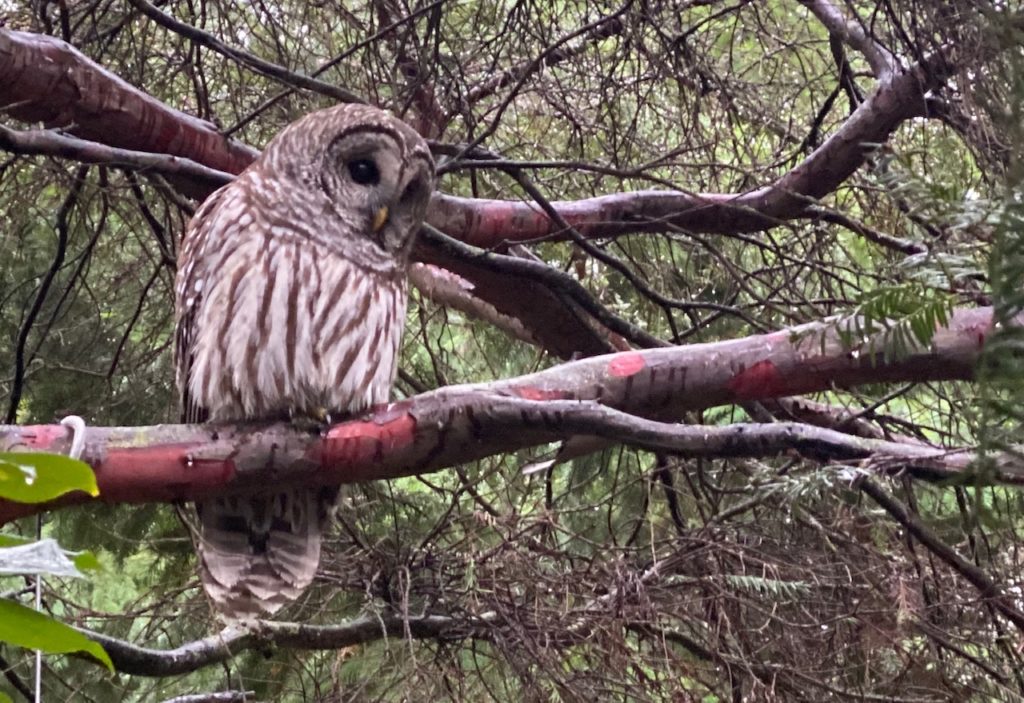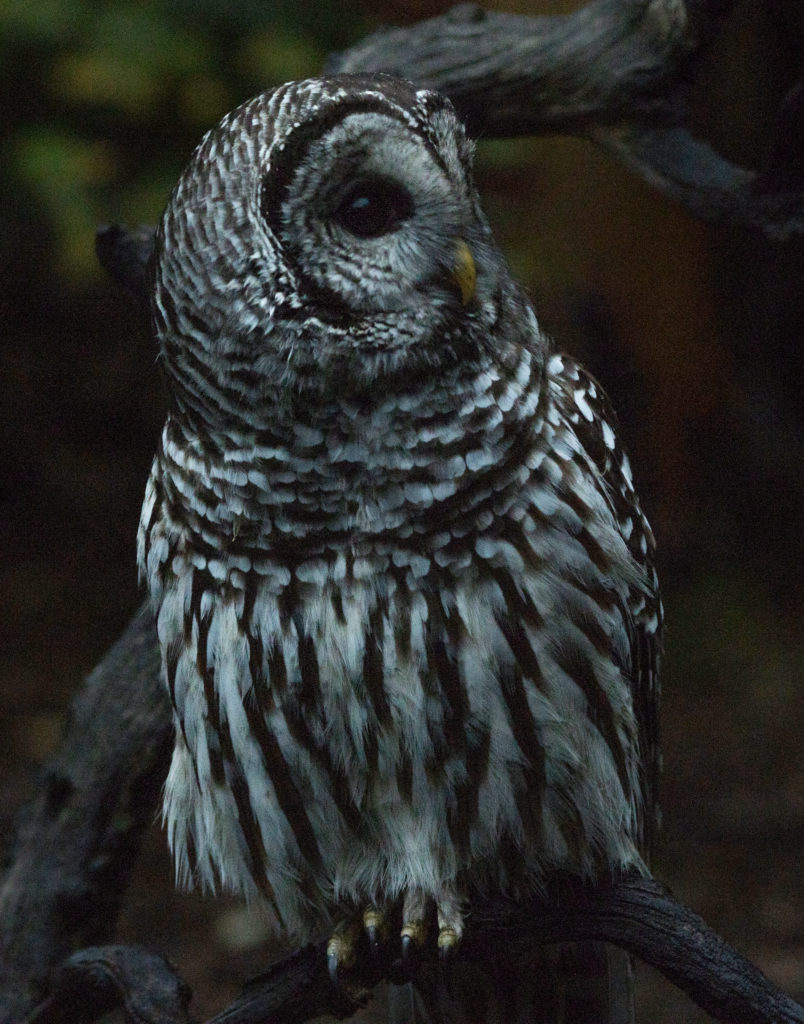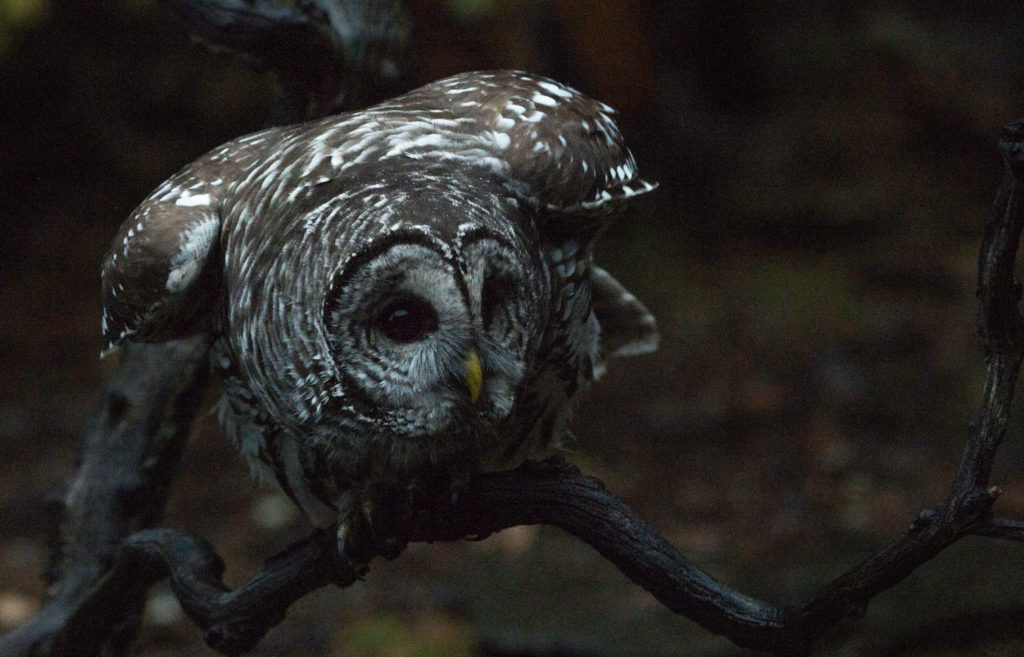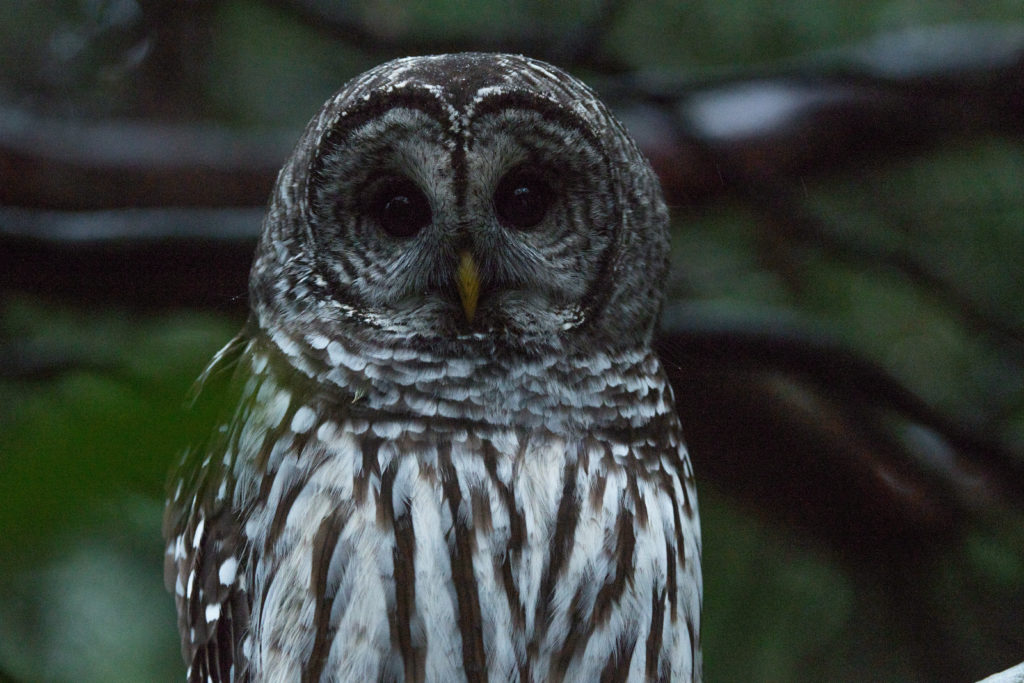I omitted a significant image I meant to include from our Bosque del Apache visit. I gook the photo on our way out of the refuge on our last day there. I have it on good authority that this is a Prairie falcon (which I suspected at the time), only the second I’ve ever photographed and the third I’ve ever knowingly seen. Unfortunately the line crew was somewhat casual in how they terminated this cable and the falcon didn’t do itself any favors in choosing such an unflattering perch. I guess I shouldn’t complain because I did get the opportunity for a photo of what is a rare bird for me and readily identifiable from the photo.
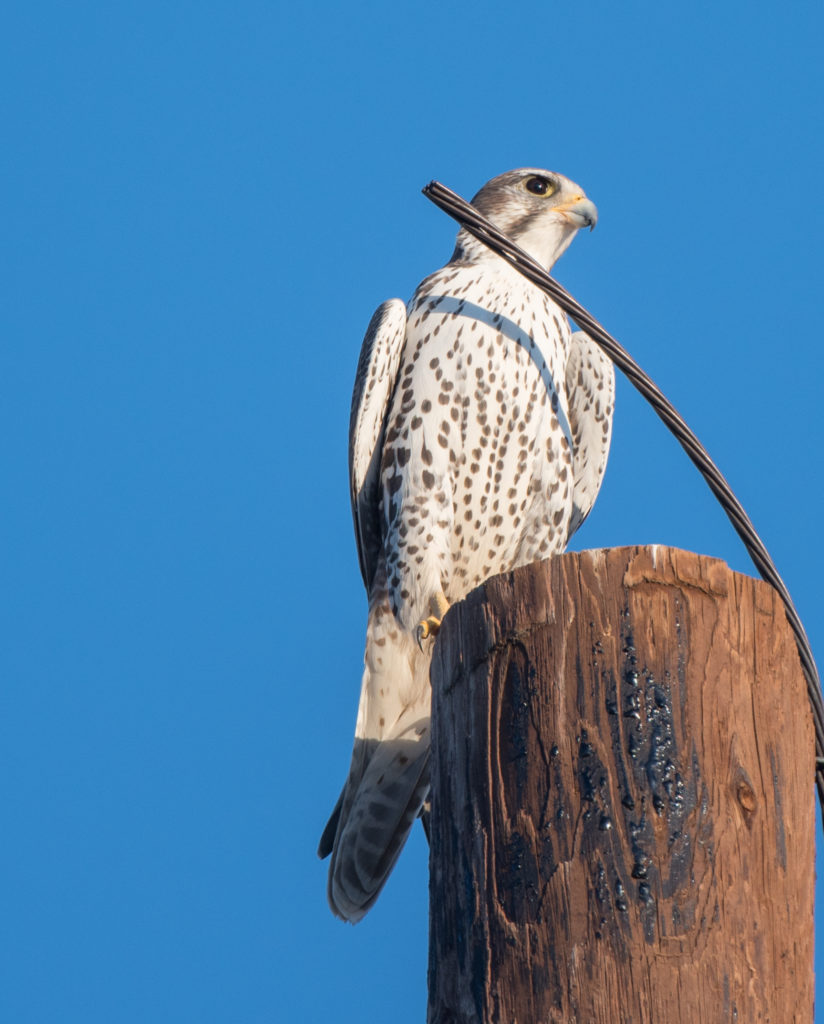
Moving on to the Randall Davey Audubon Center and Sanctuary in Santa Fe…
The sanctuary is at the upper end of Canyon Road and offers a chance to photograph birds up close. They could do a lot better regarding their layout, but they offer seed, suet and water which attracts a variety of local birds. The following birds are fairly common, or at least easy to see at the sanctuary.
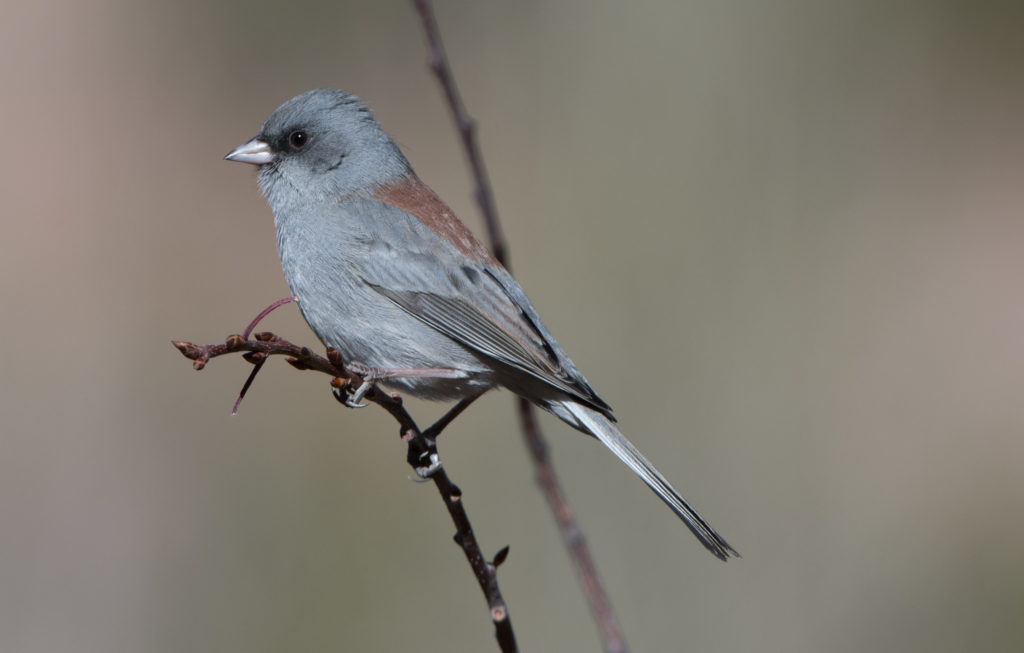
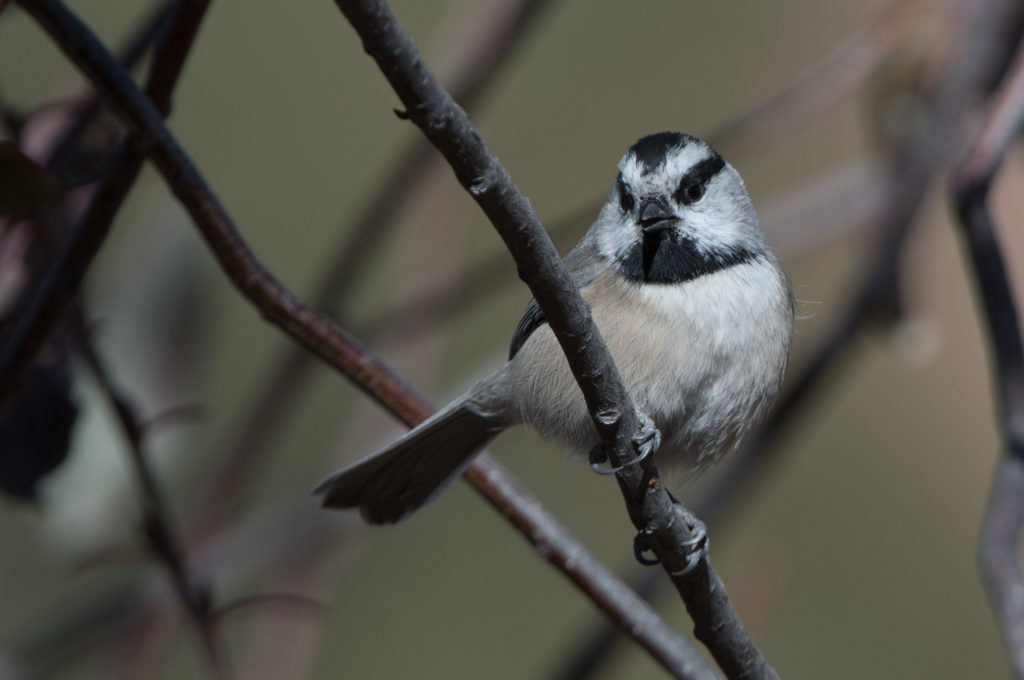
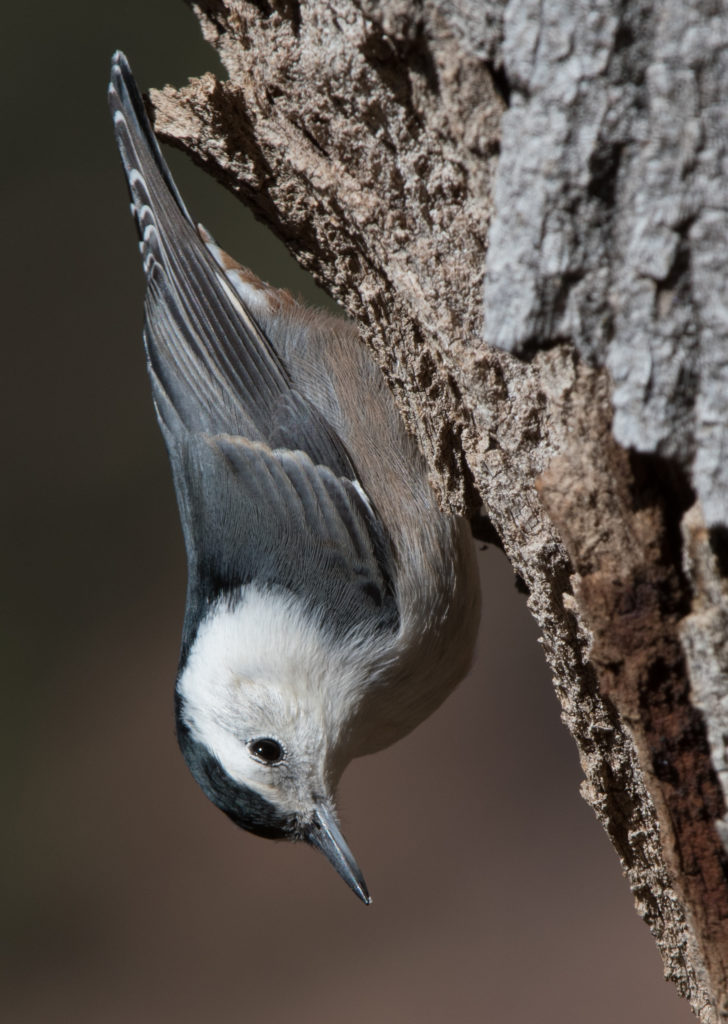
And now the problem. For several years I have photographed jays at the sanctuary. This year as I was taking photos of the jay(s) I referred to my Sibley app and was surprised to discover the Woodhouse’s Scrub-jay, a species of which I was unaware. I inquired about the jays’ identity when at the sanctuary and was told that they were all Woodhouse’s, but I had no way of assessing the competency of the person I asked. When I got back home and started processing photos I’ve found I can’t make a definitive determination. The jay I photographed looks closer to a Mexican jay to me, but sources I accessed don’t indicate that the Mexican jay extends into Northern New Mexico. So, absent any definitive input, this bird’s species will remain undetermined.
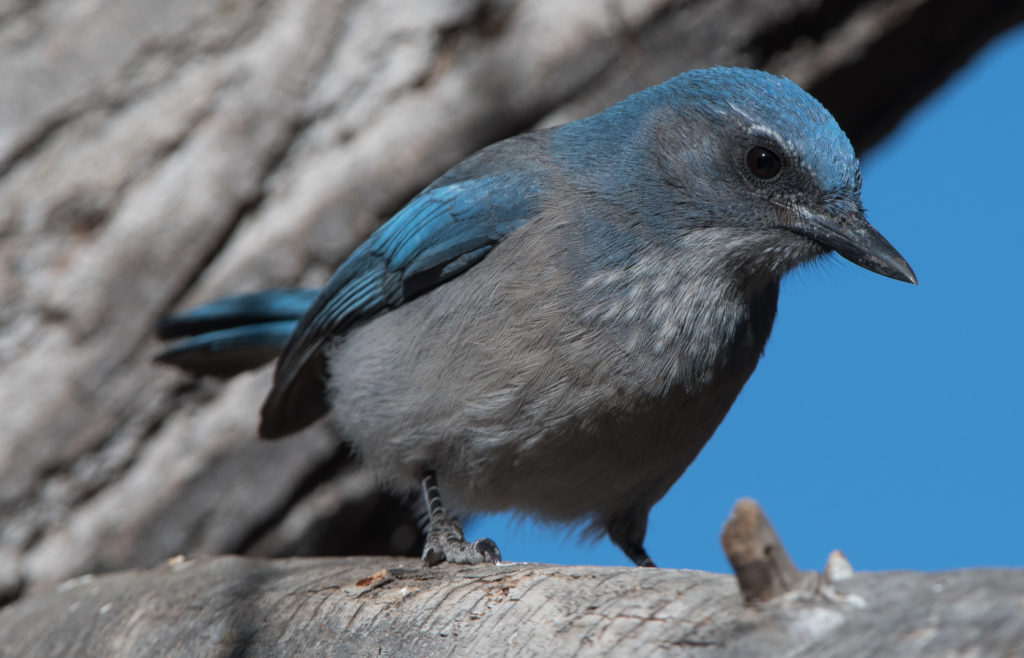
And now a little local (Anacortes) news. Earlier in the week birding friends visited to show a guest our yard and while I stepped away one of the friends told me he saw a Yellow-rumped warbler. I told him I thought it unlikely since warblers had been unusually scarce this year and I hadn’t seen any warbler since the end of the summer. The next day I looked out the window and spied a male Audubon’s Yellow-rumped warbler in our watercourse. I spent considerable time out in the cold the next day hoping it would return and I could document its visit with a photo, but it hasn’t shown itself since.
However early Thanksgiving morning, while I was keeping an eye out for the warbler, a White-throated sparrow, a much rarer visitor than the warbler, showed up in the yard… and I managed to get photos!


